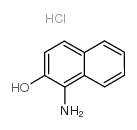| 结构式 | 名称/CAS号 | 全部文献 |
|---|---|---|
 |
苏丹红III
CAS:85-86-9 |
|
 |
1-氨基-2-萘酚盐酸盐
CAS:1198-27-2 |
| 结构式 | 名称/CAS号 | 全部文献 |
|---|---|---|
 |
苏丹红III
CAS:85-86-9 |
|
 |
1-氨基-2-萘酚盐酸盐
CAS:1198-27-2 |